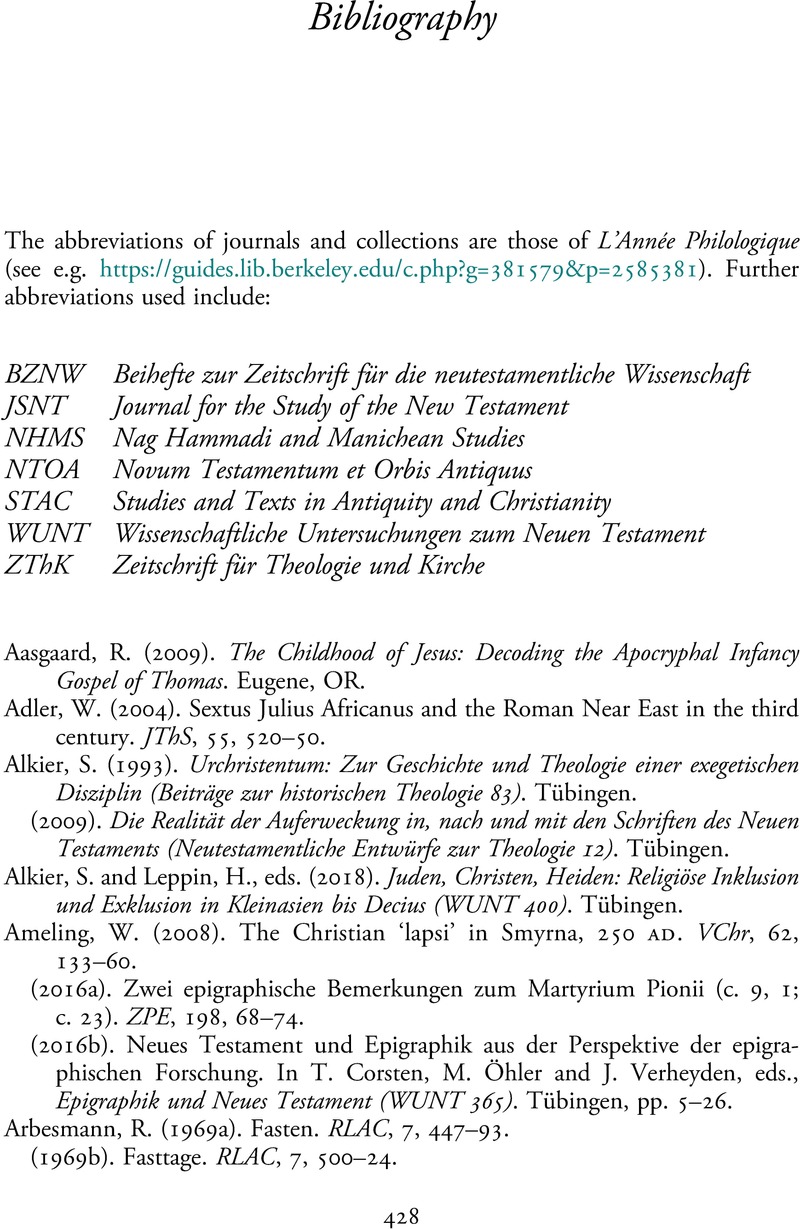Book contents
- The Early Christians
- Classical Scholarship in Translation
- The Early Christians
- Copyright page
- Contents
- Figures
- Foreword
- Acknowledgements
- Abbreviations
- Introduction
- Prologue: A Dead Body Is Lost to the World
- Chapter 1 Neither Jewish nor Pagan?
- Chapter 2 Christian Authorities
- Chapter 3 (Not) of This World
- Chapter 4 Citizens of Two Worlds
- Looking Back and Ahead
- Postscript
- Translations of Primary Sources
- Notes
- Bibliography
- Index of persons and places
- References
Bibliography
Published online by Cambridge University Press: 05 October 2023
- The Early Christians
- Classical Scholarship in Translation
- The Early Christians
- Copyright page
- Contents
- Figures
- Foreword
- Acknowledgements
- Abbreviations
- Introduction
- Prologue: A Dead Body Is Lost to the World
- Chapter 1 Neither Jewish nor Pagan?
- Chapter 2 Christian Authorities
- Chapter 3 (Not) of This World
- Chapter 4 Citizens of Two Worlds
- Looking Back and Ahead
- Postscript
- Translations of Primary Sources
- Notes
- Bibliography
- Index of persons and places
- References
Summary

- Type
- Chapter
- Information
- The Early ChristiansFrom the Beginnings to Constantine, pp. 428 - 459Publisher: Cambridge University PressPrint publication year: 2023
References
Bibliography
The abbreviations of journals and collections are those of L’Année Philologique (see e.g. https://guides.lib.berkeley.edu/c.php?g=381579&p=2585381). Further abbreviations used include:
- BZNW
Beihefte zur Zeitschrift für die neutestamentliche Wissenschaft
- JSNT
Journal for the Study of the New Testament
- NHMS
Nag Hammadi and Manichean Studies
- NTOA
Novum Testamentum et Orbis Antiquus
- STAC
Studies and Texts in Antiquity and Christianity
- WUNT
Wissenschaftliche Untersuchungen zum Neuen Testament
- ZThK
Zeitschrift für Theologie und Kirche
Beihefte zur Zeitschrift für die neutestamentliche Wissenschaft
Journal for the Study of the New Testament
Nag Hammadi and Manichean Studies
Novum Testamentum et Orbis Antiquus
Studies and Texts in Antiquity and Christianity
Wissenschaftliche Untersuchungen zum Neuen Testament
Zeitschrift für Theologie und Kirche

